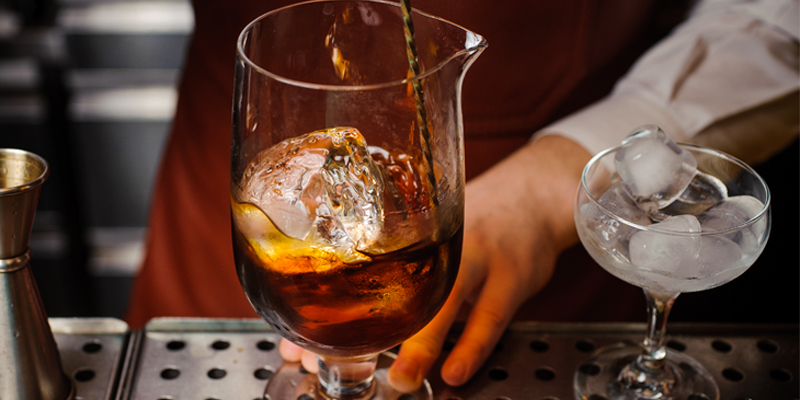
Everything served at a no-tipping restaurant is more expensive than at a tipping restaurant. That much is obvious — how else is the business going to cover the cost of higher server wages? Now, it’s more likely than ever that you will end up at a “gratuity included” restaurant because the number of places going the no-tipping route is growing. Case in point, the 32 gratuity included restaurants in New York City alone. Sure, that’s comparatively a small portion, but it’s a higher number than it was five years ago.
Which begs that question: What does no tipping do to the price of drinks? While food is a necessary part of a restaurant, a drink is an auxiliary component to the main event. It can improve the experience, and often the proper wine pairing or a well-made cocktail can significantly improve the experience, but it’s far from a necessary component.
On average, patrons at no-tipping restaurants can expect the menu price of each item to increase 20 to 25 percent. This results in an actual increase in price for the customer of 5 to 10 percent, since people generally tip 15 to 20 percent anyway (low tippers will feel the brunt of this but everyone will notice the increase in sales tax thanks to the higher bill). Here’s how much you should already be tipping on wine, and here’s the guide for tipping on drinks in general. But back to no-tipping restaurants.
Alcohol is more price-sensitive than food. You’re much more likely to buy a $7 glass of cheap wine during happy hour with your appetizers than an $18 glass. Therefore, increasing prices of drinks to reflect gratuity is more difficult, but not impossible.
Take wine for example. A bottle of wine sells at a retail price that is 30 to 35 percent the price at a typical restaurant. A flat increase in prices across the board would mean that the bottle will be even more expensive, which doesn’t work for the more price-sensitive product. John Ragan, the director of wine at Union Square Hospitality Group, told Eater back in 2015 that to keep bottles and glasses of wine on the cheaper end, expensive bottles will have to cover some of the costs. Hey, someone’s got to pay for it.
Other no-tipping restaurants are choosing to keep wine costs relatively the same as well.
At Per Se, a New York restaurant where service gratuity is included, a bottle of Lutum Pinot Noir Bien Nacido Vineyard from the Santa Maria Valley costs $165. The retail price for the same bottle at a wine store in the city is $56, so the restaurant’s price is about three times that cost, which is pretty standard.
Regardless of what route the restaurant takes in terms of price increases, buying alcohol at a restaurant isn’t cheap and for good reason. The wine had to be selected by a professional from a distributor, taking into consideration the items on the food menu that it could be paired with. It was then bought in bulk and stored in a temperature-controlled setting. Storage takes up a lot of space, and space is money.
Then the wine has to get to you, the end consumer. The wait staff needs to know the wine, which food it goes best with, and how to pick a wine based on obscure descriptions of what each customer says they like. That’s not to mention spills, broken bottles, comped glasses and corked wine.
Eliminating tipping means the final hands that touch the bottle before it gets to you lose a portion of their income unless the price goes up or is covered elsewhere. In many cases, no tipping restaurants will bring the price up on other places on the menu. So order up those drinks, because in many cases, it’s a comparative bargain.

